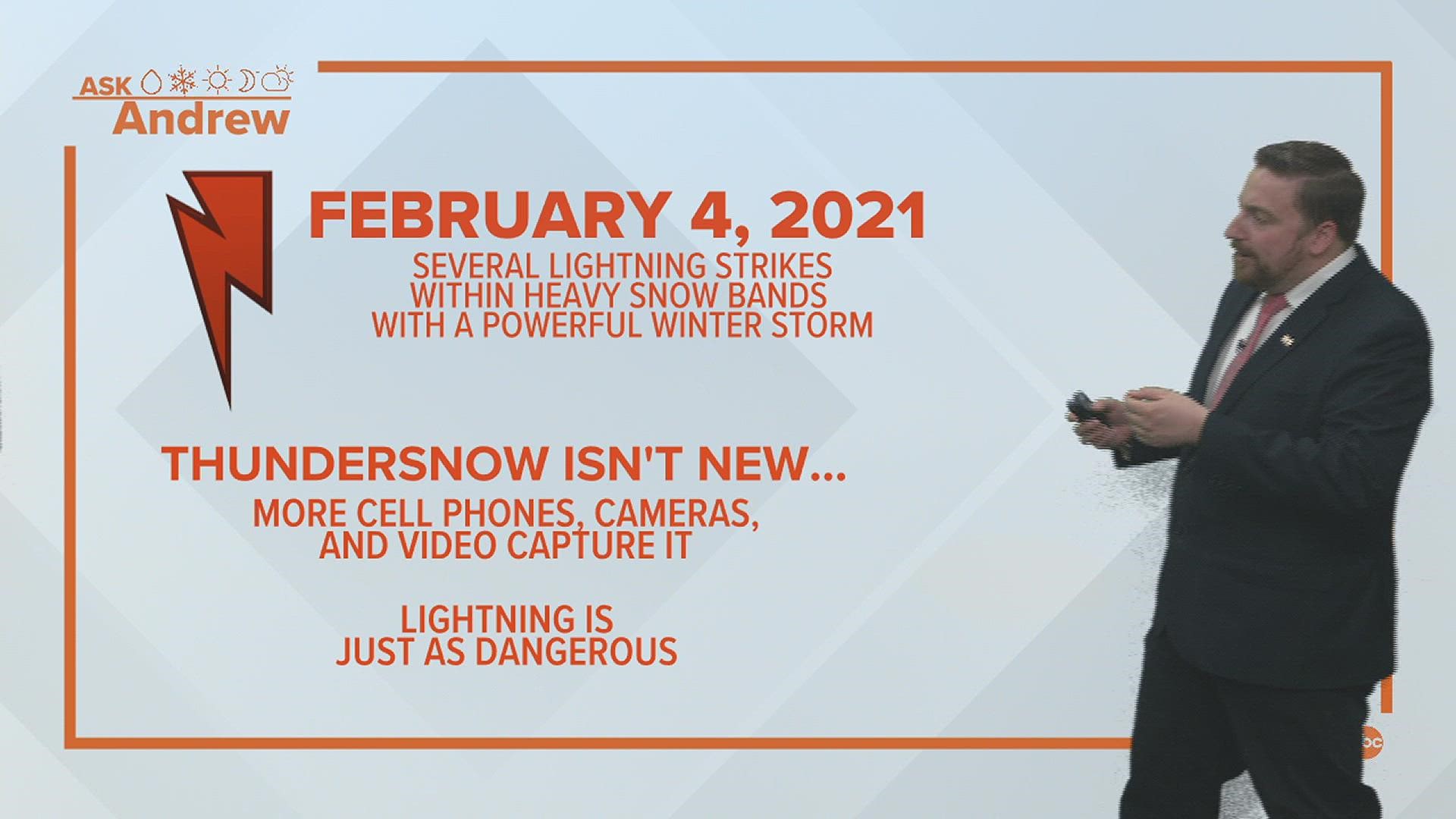MOLINE, Ill. — Editor's Note: The video above is from Jan. 24.
The thunderstorm earlier this week gave us a little taste of spring weather. As we get closer to experiencing more convective weather, let's learn about thunderstorms and more specifically lightning.
What is lightning?
According to the National Weather Service, lightning is a giant spark of electricity in the atmosphere between two clouds, clouds and the air, or clouds and the ground.
Before we see a flash of lightning, air acts as an insulator between the positive and negative charges in a cloud and between the cloud and the ground. Once the opposite charges have built up enough, the insulating capacity of the air breaks down and a rapid discharge of electricity happens - which is what we see, lightning.
After this occurs, the air is equally charged, and lightning will not occur until the charges build up again.
What kinds of lightning are there?
There are three common types of lightning: cloud to ground, cloud to cloud (intra-cloud lighting) and cloud to air.
Cloud-to-ground lightning occurs when negatively charged particles at the bottom of the cloud are attracted to the positive charged particles on the ground. This is the most common type of cloud to ground lightning, and its negatively charged.
Positively charged cloud-to-ground lightning can occur also. However, it is not as common. This occurs when the positive charge in the upper part of the cloud overcomes the negative charges in the bottom of the cloud and are attracted to the negatively charged particles on the ground.
In both cases, lightning is dangerous. However, the positively charged cloud-to-ground lightning scenario is more dangerous because lightning must travel a further distance, which means it's stronger. It also results in loud, roaring thunder.
On average in the U.S., more than 20 million cloud-to-ground lightning strikes occur each year.
Cloud-to-cloud lightning occurs when a negatively charged cloud comes in contact with or is near another cloud that is positively charged.
Cloud-to-air lightning occurs when positive charges in a cloud are attracted to negative air particles, resulting in some loud thunder.
How does lightning relate to thunder?
Lightning is what creates thunder. According to the National Weather Service, energy from a lightning bolt briefly heats the air to about 50,000 degrees Fahrenheit, which is much hotter than the sun's surface.
This causes the air to explode outward. Pressure in the initial shockwave decreases as the distance from the initial shockwave increases. At 10 yards away from the “explosion,” the pressure waves become small enough to be perceived as the sound we call thunder.
You can estimate how far you are from lightning by using thunder. Once you see lightning, count how many seconds pass until you hear thunder. Take that number and divide by five since sound travels at 1/5 mile per second. That’s how many miles away you are from lightning.

